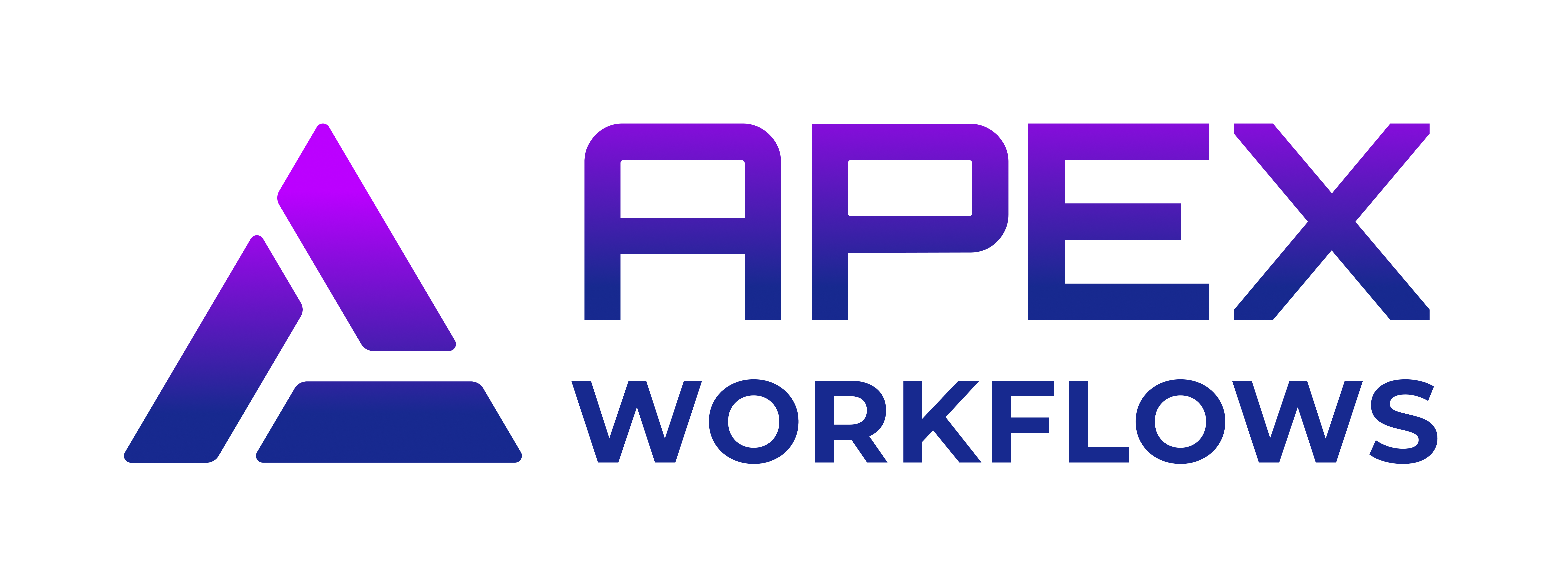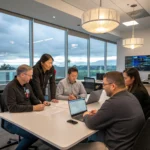In 2025, organizations are facing a new frontier in talent management: high-speed, high-scale employee onboarding. As hiring accelerates across industries—from tech to healthcare to finance—the imperative isn't just attracting talent, it's rapidly integrating them into productive roles. Traditional methods can't keep up, which is why AI onboarding workflows have emerged as a cornerstone of modern HR transformation. With the growing need for automation, personalization, and efficiency, companies adopting AI-driven onboarding processes are not just preparing for growth—they’re enabling it.
The Evolution of Employee Onboarding: From Manual to AI-Driven
Employee onboarding has historically been a time-consuming process marked by inconsistent experiences, repeated administrative tasks, and delays in new hire productivity. In an era where companies must onboard dozens—or even hundreds—of employees rapidly, these legacy approaches are proving unsustainable. The shift toward digital transformation in HR has paved the way for automation, with AI taking the lead in optimizing and scaling these processes.
AI in HR technology now plays a pivotal role in employee lifecycle management, especially onboarding. By 2025, AI onboarding workflows have become essential, not optional. They allow organizations to streamline initial setup, tailor training paths, and ensure compliance, all while reducing manual burdens. As remote and hybrid work environments persist, scalable, digital onboarding processes are no longer a preference but a necessity.
Core Benefits of AI Onboarding Workflows for Growing Companies
One of the most immediate advantages of AI-driven onboarding is speed. Companies deploying AI onboarding workflows are achieving more than 50% reductions in onboarding cycle times. What once took weeks can now be accomplished in days. Automation eliminates repetitive tasks, frees up HR teams, and reduces costly errors in documentation and compliance.
More than just efficiency, AI enables personalized, adaptive learning experiences for new employees. AI algorithms gauge role requirements, learning preferences, and behavior patterns to deliver individualized onboarding paths. Predictive analytics further identify early signs of disengagement or churn, giving HR timely insight to act.
Integrated compliance features ensure that documentation, certifications, and training protocols align with internal and legal standards. As a result, onboarding becomes not only faster but also secure, consistent, and aligned with company objectives.
Key Technologies Powering AI Onboarding Workflows
Several advancements in AI and automation are fueling the transformation of onboarding. Intelligent virtual assistants and chatbots powered by Natural Language Processing (NLP) handle queries from new hires in real time, providing a sense of immediacy and support. This conversational AI approach removes communication barriers while improving the quality of interaction.
Machine learning algorithms enable content customization, adjusting training modules based on the learner’s pace and performance. Automated document processing tools streamline ID verification, contract signing, and policy acknowledgment—essential tasks that once required manual oversight.
Modern AI onboarding systems thrive on integration. Cloud-based HR platforms and APIs connect various tools—from payroll to performance management systems—creating a cohesive, end-to-end experience. Some companies are also experimenting with AR/VR technologies for immersive workplace simulations, particularly in manufacturing and healthcare, to prepare employees more effectively.
Building a Scalable AI-Driven Onboarding Process
Designing a scalable AI onboarding process starts with mapping out the employee journey, identifying touchpoints for automation. Tasks like generating IT credentials, assigning compliance trainings, setting up payroll, and logging benefit selections are ripe for automation. AI systems can sequence these workflows according to role, department, and location.
Simultaneously, building in feedback mechanisms and real-time performance tracking ensures that onboarding continues beyond Day One. Role-based onboarding flows support precision in training and align new hires with business goals more rapidly.
Using onboarding automation tools with no-code capabilities empowers HR leaders to make adjustments without developer dependency, enabling faster updates and continuous optimization. Equally important is ensuring that backend infrastructure—cloud storage, APIs, security protocols—can grow along with the workforce, sustaining scalability under heavy hiring cycles.
Challenges in Implementing AI for Workforce Scaling
While the benefits are significant, scaling onboarding with AI presents its own set of challenges. High-quality, structured data is the foundation of effective AI, and many companies struggle with fragmented HR systems and inconsistent data inputs. Proper integration and preparation of data sources are critical to avoid flawed automation outputs.
Ethical concerns also demand attention. AI decision-making in onboarding—especially regarding training recommendations or performance predictions—must be transparent and free from bias. Security and compliance issues, particularly for organizations handling sensitive personal information, necessitate adherence to global standards like GDPR and HIPAA.
From a human angle, complete automation risks eroding the cultural connection of onboarding. It's essential to balance AI efficiencies with moments of human interaction that reinforce company values and leadership presence. HR teams may also face internal pushback from stakeholders wary of replacing traditional approaches, making change management a key success factor.
Case Studies and Industry Success Stories
Organizations like SuperAGI have reported onboarding time-to-productivity improvements of over 50% and retention increases of 82% after adopting AI onboarding workflows. This kind of measurable impact is driving adoption across sectors.
In the financial sector, where compliance is paramount, AI automation tools like Cflow simplify policy management and approvals. SaaS firms are leveraging JobSwift.AI to inject scalability into their remote onboarding operations. In healthcare, companies use platforms such as inFeedo to combine mental wellness monitoring with onboarding progress tracking, ensuring a more holistic experience.
Comparisons between traditional onboarding and AI-enhanced workflows consistently show better engagement, faster system access, fewer errors, and improved employee satisfaction scores—turning onboarding into a strategic driver of growth.
Best Practices for Future-Ready AI Onboarding
Companies looking to future-proof their onboarding should begin with a comprehensive workflow audit to identify repetitive and high-impact automation opportunities. Aligning AI initiatives with organizational goals—such as reducing time-to-productivity or improving retention—ensures that onboarding upgrades deliver concrete business value.
Using no-code platforms allows HR teams to deploy, tweak, and scale rapidly without major IT intervention. Emphasis must remain on personalization and adaptive learning, supported by real-time analytics to make data-driven improvements. At every step, maintaining compliance and regulatory mindfulness is crucial to avoid costly oversights.
Finally, while technology enables speed and reach, the human touch remains indispensable. A hybrid strategy that leverages AI for efficiency while preserving human connection for culture and engagement delivers the best outcomes.
Conclusion: The Competitive Edge of AI-Onboarding in 2025
AI onboarding workflows are doing more than automating introductory tasks—they're redefining how organizations scale culture, capability, and compliance. As rapid workforce expansion becomes the norm, these intelligent systems provide the agility enterprises need to remain competitive.
The companies winning the talent war in 2025 will not be those with the biggest recruitment budgets, but those with the smartest, most scalable onboarding strategies. By integrating AI-powered tools with human-centric thinking, HR leaders can turn onboarding into a growth engine—not a bottleneck—in the digital age.






